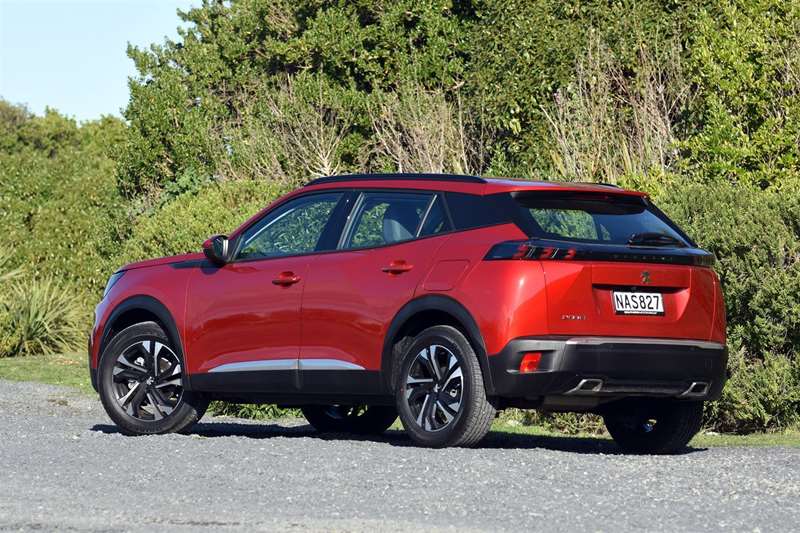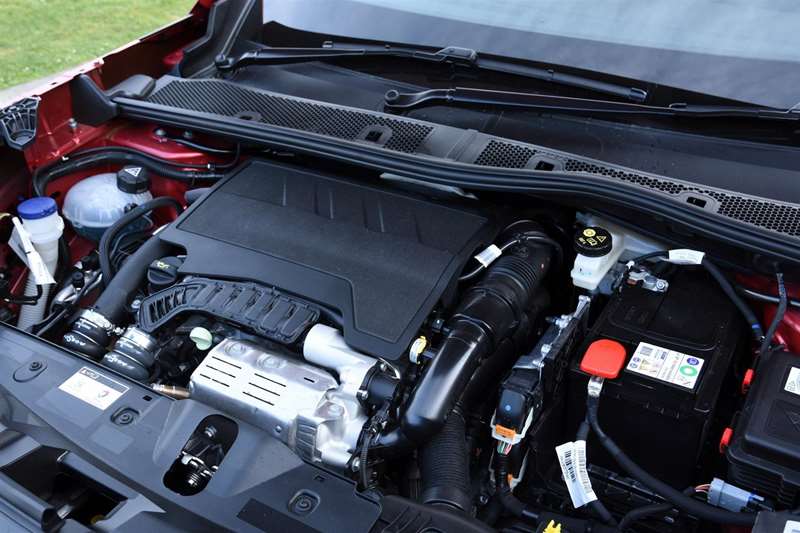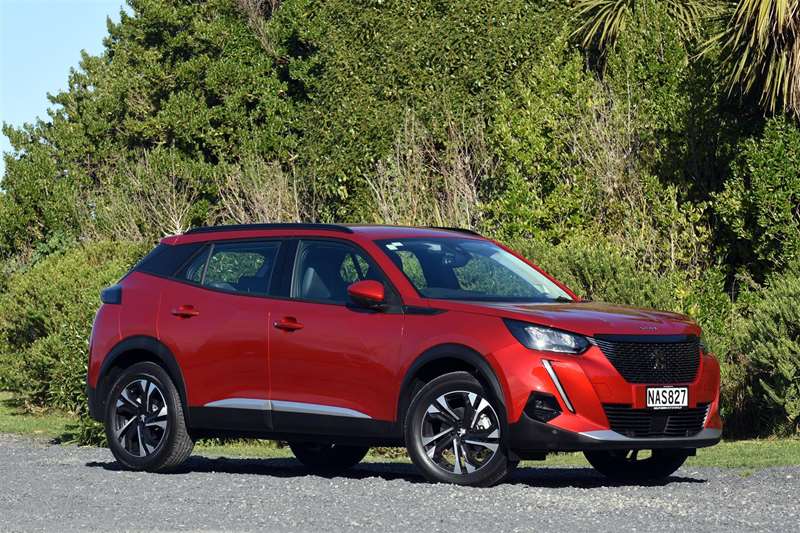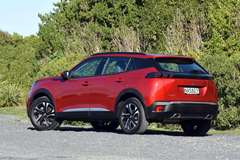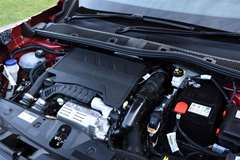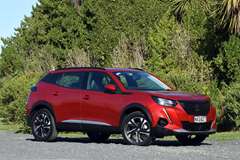Peugeot is showing serious intent in the compact crossover segment with the new 2008. David Thomson find himself in 3-D viewing mode as he gets behind the wheel of the new machine.
What’s new?
Manufactured from 2013 to 2019, built on an underpinning platform first deployed soon after we entered the 21st century, the first-generation Peugeot 2008 represented a solid, if unspectacular, crossover effort from the French manufacturer.
Its successor, launched internationally at last year’s Geneva Motor Show, is an altogether bolder and more modern machine. It is also larger, though still the smallest crossover in the Peugeot range.
Vehicles such as the Volkswagen T-Roc and T-Cross, the Skoda Kamiq and the new Mazda CX-30 are among the obvious like-size rivals.
Importantly, this new Deux Mille Huit is one of the first vehicles to be engineered around a new platform that will underpin small and medium-sized models from Peugeot, Citroen and Opel for years to come. That platform has been designed from the outset for both internal combustion and pure electric power, with one of the first available including an EV version of the 2008.
Before fans of zero-carbon motoring get too excited, the Kiwi 2008 line-up is currently all-petrol. However, the 50kWh 100kW/300Nm pure-electric model is set to join the range in the second half of next year.
The current line-up opens with the $33,990 Active which, like the mid-tier $39,990 Allure (the model tested here) is powered by a 96kW/230Nm 1.2-litre three-cylinder turbo-petrol motor that powers the front wheels via a six-speed automatic transmission. The flagship $45,990 2008 GT is powered by an uprated 114kW/240Nm version of the same engine, deploying an eight-speed transmission, driving the front wheels only.
A major talking point on the latest 2008 is Peugeot’s ‘‘3-D i-cockpit’’ instrument display. Set to appear on other new Peugeot products over time, it makes its debut here on the Allure and GT.
What comes as standard?
Riding on 16-inch alloys, the entry-level Active does not have the fancy instrument display, but is otherwise well equipped. Its active safety suite includes driver attention alert, forward collision warning and active emergency braking. A seven-inch central touchscreen is home base for satellite navigation (with speed-sign recognition), smartphone mirroring and Bluetooth connectivity.
The Allure takes 17-inch alloys and packs plenty of extra features, including keyless entry and start, folding power mirrors, climate control, height adjustable front seats, a 10-inch central touchscreen, and the full 3-D instrument display. It also comes with hill-descent control and a drive mode selector which includes an advanced grip control system with different modes for sand, mud and snow — it’s not a four-wheel drive, but these modes do alter power delivery to optimise front-drive grip on such surfaces.
The more powerful GT drops the advanced grip control system in favour of a conventional drive mode choice between eco, normal and sport. It is equipped with 18-inch alloys, a full LED exterior light system, adaptive radar cruise control, active blind spot monitoring and lane keeping, cyclist and pedestrian recognition, heated sports seats and wireless phone charging.
What’s it like to look at?
Standing out from the crowd in an increasingly packed compact crossover segment is not an easy task, but Peugeot deftly manages it with cleverly distinctive styling without being unpleasantly quirky.
The photos that accompany this review show the blocky, angular styling of the new machine, with the blunt nose and high waistline especially obvious.
What is not so evident in the photos is the intriguing detailing that brings dynamism to the exterior design. The panel work around the nose and tail is neatly done, but the smartest strokes are the delicate creases on the bonnet, and those that form triangular sections along the vehicle’s flanks, one anchored on the upper leading edge of the front door, and the other at the upper rear edge of the back doors.
Peugeots that offer this much visual appeal have been few and far between.
What’s it like inside?
By class standards, the new 2008 is a decently roomy machine.
With the rear seats raised, boot space is 471 litres below the load cover, and 571 litres all-up, with part of the capacity being provided by a separate compartment under the upper-level of the dual-layer boot floor. Fold the rear seats down and cargo capacity rises to 1467 litres.
The rear seating position provides reasonable room, although with quite a flat seat squab. The Allure has no fold-down centre armrest in the back, but there are two rear-seat USB charge ports.
High door sills impair access to the front seats, but once inside there is plenty to praise in the forward cabin.
Comfortable and supportive, the front seats are separated by a centre console that includes a combination armrest/centre bin, twin cupholders and both a tray and lidded compartment (flanked by USB ports) in front of the gear lever. The driver and passenger seats adjust for height and back angle, though altering the latter is fiddly as space is tight between the vehicle’s B-Pillar and the large rotary knob that performs this function.
Good use is made of contrasting materials and surfaces in the cabin, with the seats trimmed in a mix of textured fabric and imitation leather, a prominent patterned strip wrapping around from the dash on to the doors, and soft-touch surfacing across the upper dashboard.
The dashboard itself echoes the angular design of the exterior. The centre touchscreen is mounted high on the dashboard, angled towards the driver. A row of toggle switches jut out beneath it, with further buttons tucked behind.
In recent years, Peugeot has rolled out a novel approach to the driving position of its vehicles with its i-Cockpit design. This involves a compact steering wheel flattened at the top and bottom that the driver looks over — rather than through — to see the main instrument cluster. The idea behind this approach is that less refocusing time is required when glancing back and forth from the instruments to the road.
The floating 3-D instrument display of the 2008 Allure and GT takes the i-Cockpit concept further, by projecting key information such as vehicle speed ahead of other less important information. The effect is a little like a head-up display, though entirely within the main instrument binnacle. The display is fully digital, too, offering the driver choice in the information shown and how it is shown (including digital versions of conventional dials).
Getting used to the i-Cockpit takes time and shorter drivers may need to set the steering wheel quite low to see the instruments over it, but on balance it works well.
What’s it like to drive?
Over the past decade, small-capacity, high-output turbo engines have become Europe’s favoured means of achieving decent performance while meeting economy and emissions requirements. The distinctive three-cyclinder thrum of these engines is pleasant enough, and in many ways smoother than that of the larger engines they have replaced.
Part of a wider family of Peugeot group motors that goes under the collective label of PureTech, and also features a 1.0 litre engine in various states of tune, the 1.2-litre motor in the 2008 Allure is a great example of the type. It’s responsive, and peak outputs of 96kW and 230Nm provide a respectable turn of speed. Mechanical refinement is excellent at lower revs and light throttle openings, while a firmer prod on the accelerator elicits a gruff but not unpleasant note.
The Allure’s six-speed automatic transmission is not as fancy as the eight-speed used on the GT, but it’s smooth in everyday use. Manual control over gear changes is possible via the tiptronic shift gate, although even then the gearbox will automatically select a higher gear if the engine’s redline is reached.
2008 models fitted with this motor are rated at a 6.0 litres/100km economy return, and I came close to this, managing a reasonable 6.5 litres/100km on test.
With light controls and decent visibility, the test car was easy to drive around town. There are sensors and a reversing camera to help with parking, and a neat feature was that when you walked away from the car with the key fob in your pocket, it automatically locked itself.
Highway driving was straightforward, too, albeit with standard rather than adaptive radar cruise control. Ride quality at open road speeds is pliant on good surfaces and some coarse-chip roar aside, noise levels are nicely contained.
The 2008 Allure is set up to prioritise comfort over handling prowess, which is exactly what one would expect for a vehicle of its type.
That said, it is a pleasant vehicle to guide down winding roads at sensible speeds. While light on feel, the steering is accurate. Grip and balance are good and body control fine. Pressing on in a way I am sure few owners will ever do, the test car revealed its limitations, becoming floaty over major surface imperfections and unsettled by significant mid-corner bumps.
A short stint on a muddy gravel road demonstrated the value of the car’s advanced grip control system. Just remember though, like so many crossovers these days, the 2008 is not a four-wheel drive.
Verdict
In a market segment all too often defined by a sameness of styling, the new 2008 stands out as a refreshingly original and appealing machine. Counting good looks and some innovative interior design features as key strengths, the 2008 Allure strikes a good balance between performance and economy and is a pleasant well-mannered car to drive.
